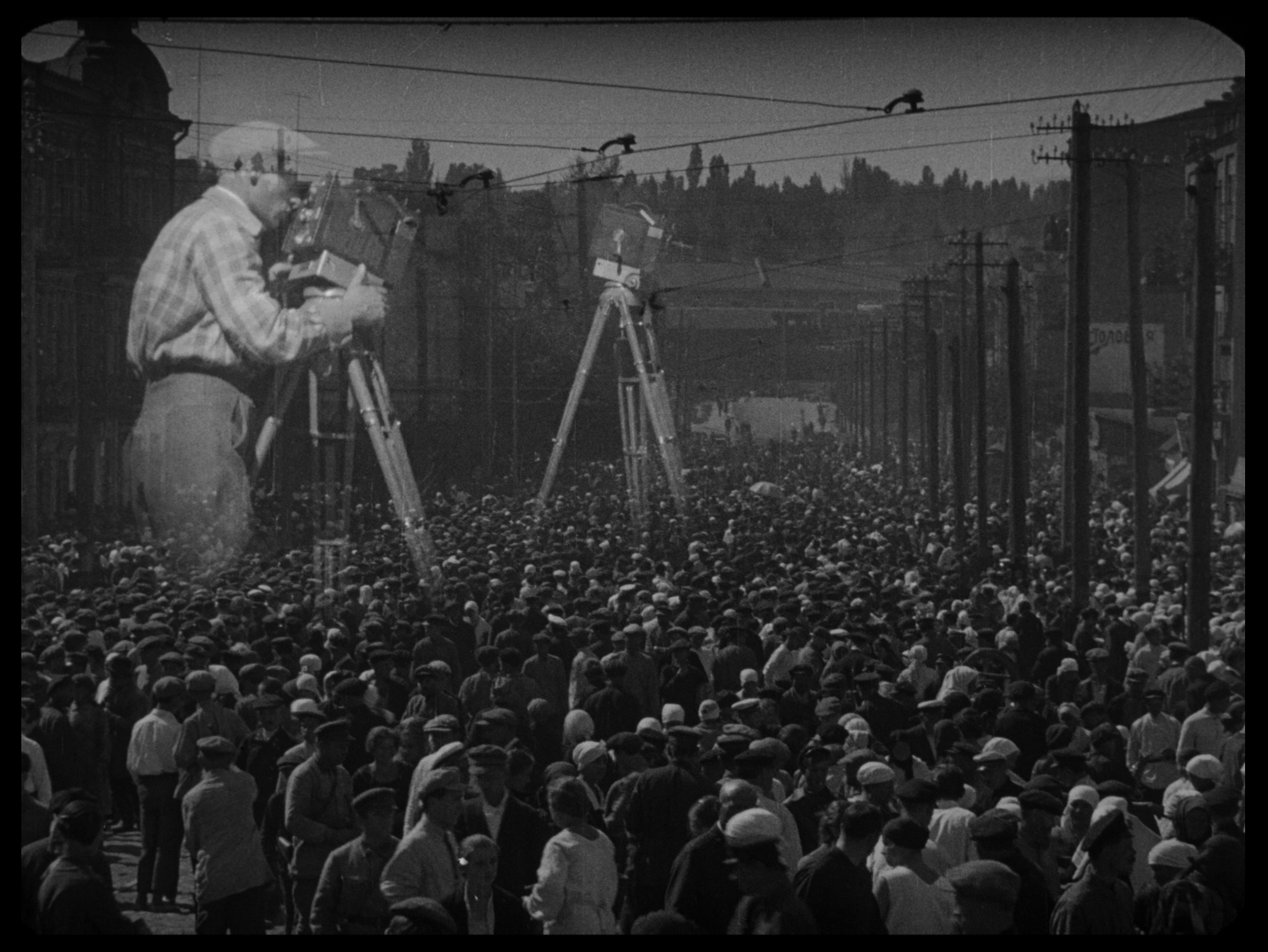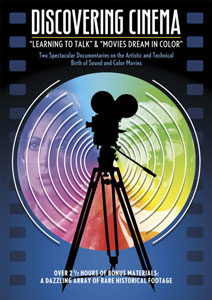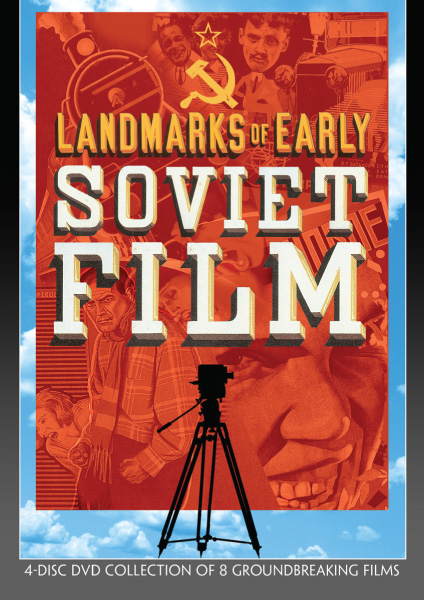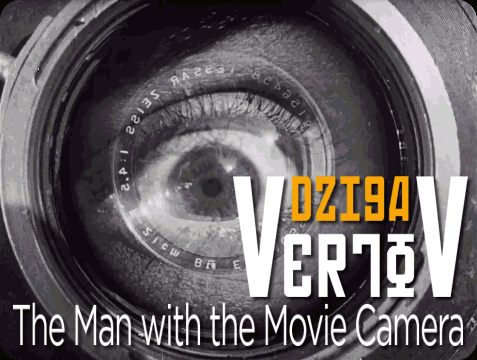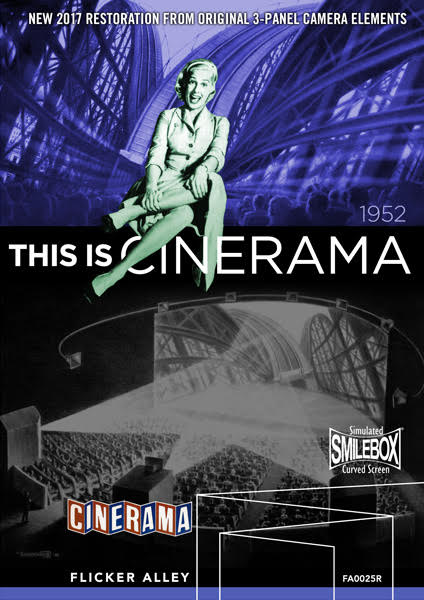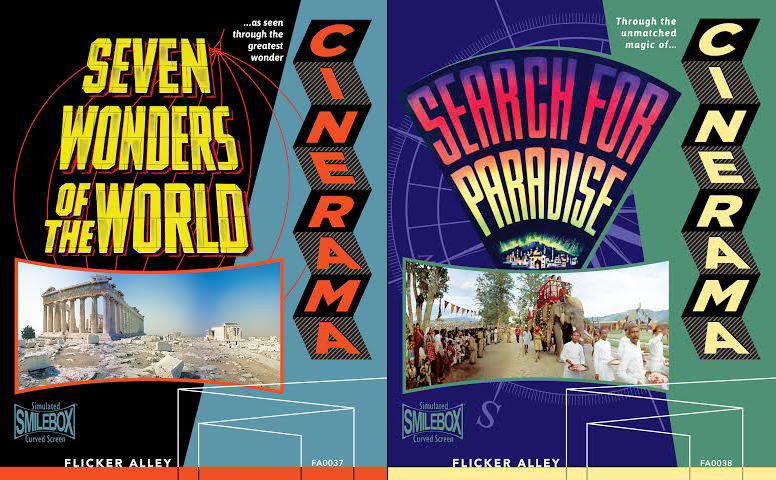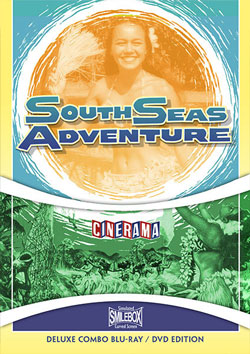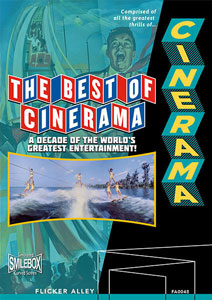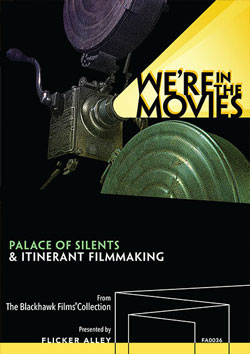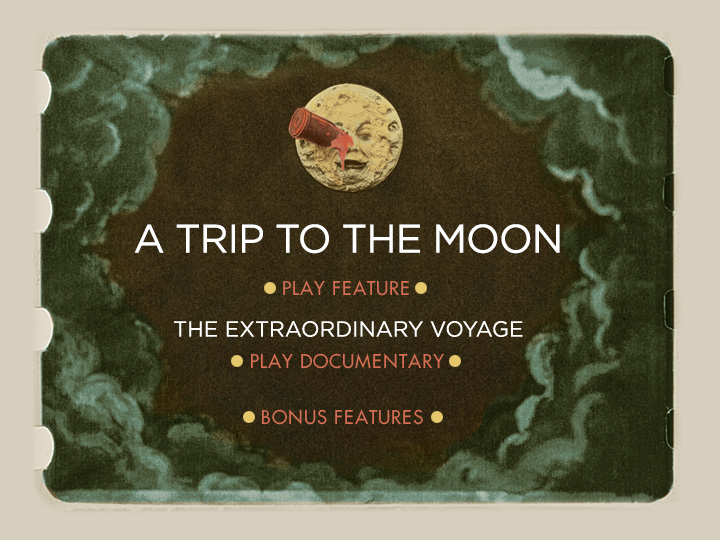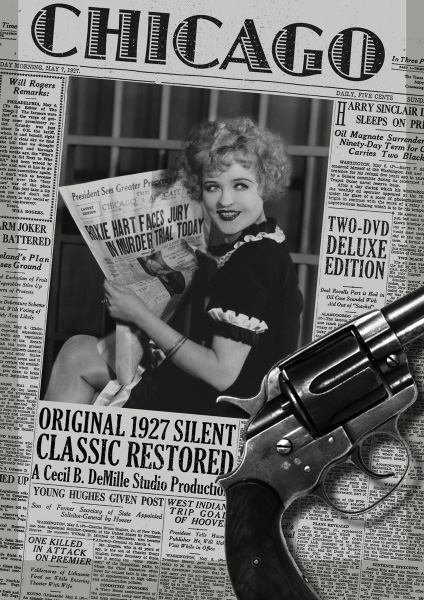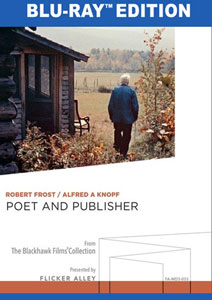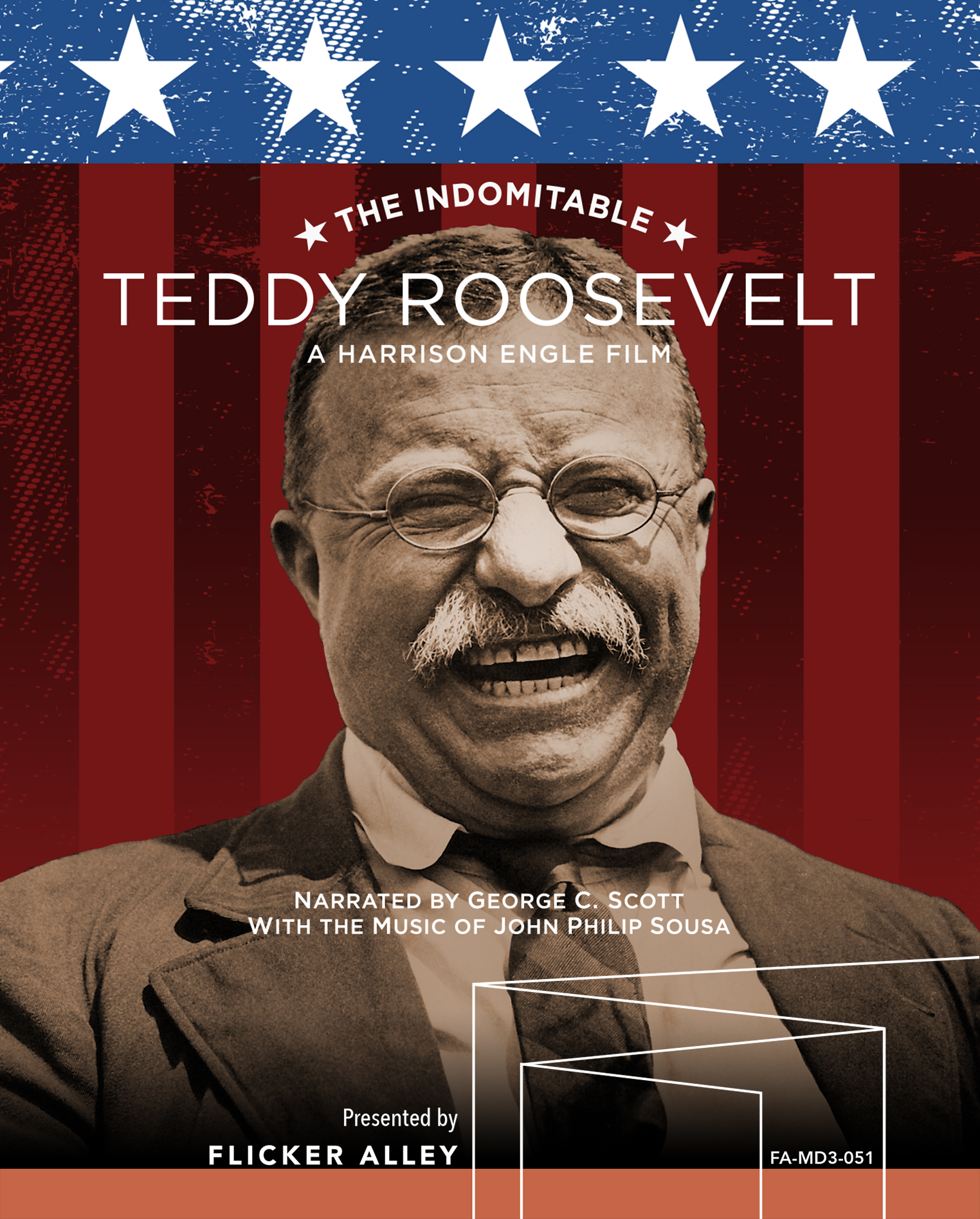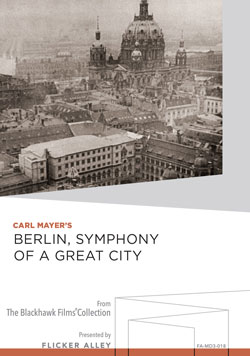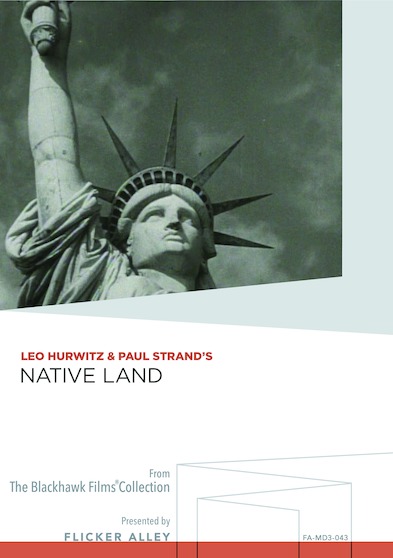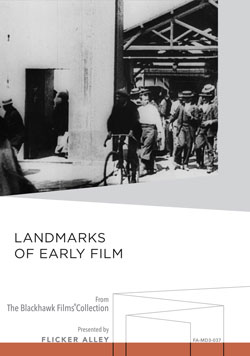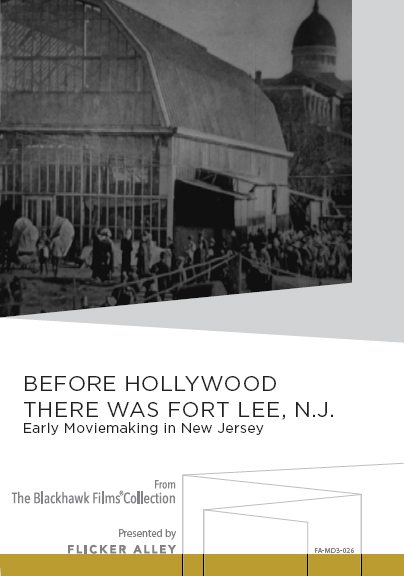Documentaries capture reality — or, to be more precise, a cinematic version of reality. The earliest films by the Lumière brothers are, in fact, short documentaries focused on daily occurrences. As Auguste and Louis Lumière realized, audiences can learn a lot about art, culture, and humans from moving images, and they can have a lot of fun too! Flicker Alley holds a number of fascinating documentaries — some bonus features, some feature-length films, all thought-provoking and entertaining in one way or another. Here, for your systematizing pleasure, is a list of every feature documentary within our collection, along with some notable short docs too:
Discovering Cinema: “Learning to Talk” & “Movies Dream in Color”
Discovering Cinema is a two-disc DVD set comprised of Learning to Talk and Movies Dream in Color, produced by Lobster Films/Histoire, 2003-2004. Film historians Eric Lange and Serge Bromberg compiled materials from their own Lobster Films collection with material from archives throughout Europe and the USA to create these two historic documentaries illustrating the birth of sound and color cinema.
Told from a European perspective, these documentaries will surprise American viewers with moving footage of Charles-Émile Reynaud’s pre-cinema animation “Pantomimes Lumineuses”; the gadget-packed Allefex machine for live sync sound effects; Gaumont’s 1905 Chronophone sound film system, using a compressed-air amplifier and Chronochrome three-color systems; additional unique examples of the Kodacolor lenticular color system, Kinemacolor, an additive system using filters; and NotoFilm, in which notes of the intended musical accompaniment stream across the bottom of the silent screen.
Landmarks of Early Soviet Film
During the 1920s, Soviet documentary and fiction films were financed by the State. Their fledgling directors— some barely out of their teens — converted their lives from theater, engineering, painting and journalism to the practice and theory of a revolutionary cinema devoted to showing the achievements and aspirations of the new Socialist society. Their challenge was to captivate an enormous, culturally diverse, multi-lingual, semi-literate population in ways that would be emotionally compelling, yet ideologically clear. The proven ability of movies to achieve this difficult goal inspired Lenin’s famous dictum, “For us, cinema is the most important art.” Their stunning innovations recharged world cinema.
The documentaries within Landmarks of Early Soviet Film are as follows: Stride, Soviet!, The Fall of the Romanov Dynasty, Turksib, and Salt for Svanetia.
Stride, Soviet! (1926): Dziga Vertov transforms a State commission intended to show what the Soviet regime had done for Moscow into a highly experimental film.
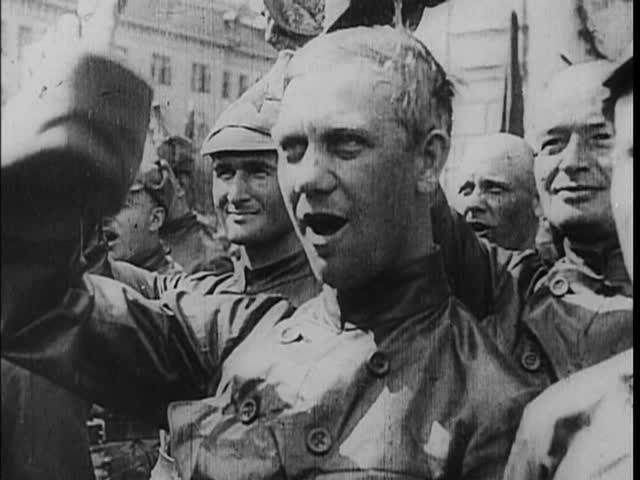
Stride, Soviet!
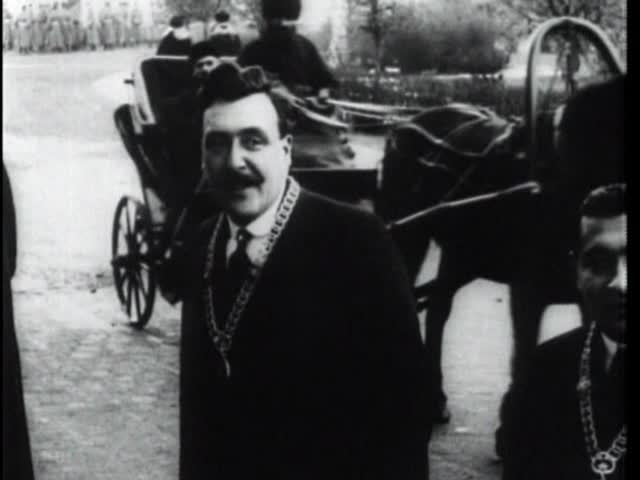
The Fall of the Romanov Dynasty
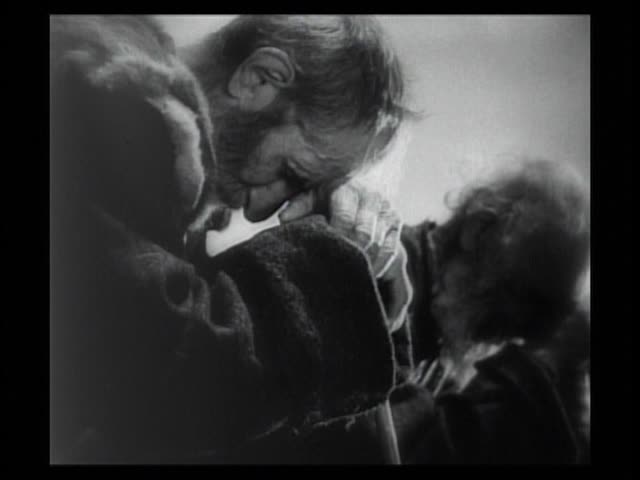
Salt for Svanetia
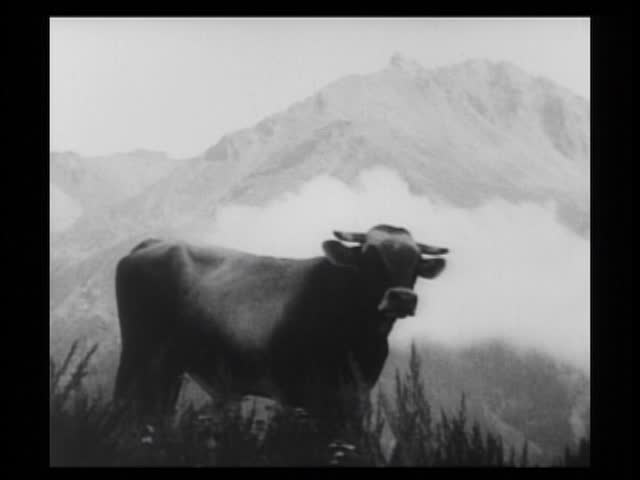
Turksib
The Fall of the Romanov Dynasty (1927): Esfir Shub created her landmark documentary from pre-Soviet Russian newsreels gathered from Europe and America.
Turksib (1930): Viktor Turin’s stirring chronicle of the building of the Turkestan-Siberian railway — this film was a major inspiration to the British and American documentary film movements of the 1930s.
Salt for Svanetia (1930): Mikhail Kalatozov’s exploration of the Caucasus region of Svanetia, a remote, mountainous area where the Ushkul tribe lives in a ‘stone-age’ culture.
Dziga Vertov: The Man with the Movie Camera and Other Newly-Restored Works
“I am an eye. A mechanical eye. I am the machine that reveals the world to you as only the machine can see it.”
– Dziga Vertov (“Kino-Eye”)
These words, written in 1923 – only a year after Robert Flaherty’s Nanook of the North was released – reflect the Soviet pioneer’s developing approach to cinema as an art form that shuns traditional or Western narrative in favor of images from real life. They lay the foundation for what would become the crux of Vertov’s revolutionary, anti-bourgeois aesthetic wherein the camera is an extension of the human eye, capturing “the chaos of visual phenomena filling the universe.” Over the next decade-and-a-half, Vertov would devote his life to the construction and organization of these raw images, his apotheosis being the landmark 1929 film The Man with the Movie Camera. In it, he comes closest to realizing his theory of ‘Kino-Eye,’ creating a new, more ambitious and more significant picture than what the eye initially perceives.
Now – thanks to the extraordinary restoration efforts of Lobster Films, Blackhawk Films® Collection, EYE Film Institute, Cinémathèque de Toulouse, and the Centre National de la Cinématographie – Flicker Alley is able to present the four films featured on Dziga Vertov: The Man with the Movie Camera and Other Newly-Restored Works in a brand-new, Blu-ray edition.
Other works included:
Kino-Eye (1924) – A cinematographic poem in which Vertov lays the foundation of his Kino-Eye principles, the film shows the incredible force of his theories, but also the beauty and energy of a society fresh from revolution, ready to face the challenges of a difficult future.
Enthusiasm: Symphony of the Donbass (1931) – One of the first Soviet sound films, it deals with the Five Year Plan of the late 1920s, and represents Vertov’s radical attempt to link economic progress with the introduction of sound in cinema.
Three Songs About Lenin (1934) – Arguably Vertov’s most personal work, the triptych celebrates the Soviet leader ten years after his death as seen through the eyes of the people.
Nanook of the North (and Other Films of Arctic Life)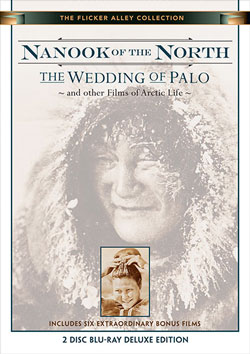
Robert Flaherty made this wonderful film of Eskimo (Inuit) life following six years as an Arctic explorer for the Canadian Northern Railway. Flaherty seized upon the idea of structuring his movie around characters who reenacted episodes of their lives and participated in the shaping of the film. He was not trained as an anthropologist, but Flaherty wisely guides our discovery of the people and their activities. Ninety years later, Nanook of the North remains as completely engaging as it was in 1922, a huge influence on many ethnographic films that followed. This edition is mastered in high definition at the visually correct speed from the painstaking 35mm restoration, with a lovely orchestral score composed, compiled and conducted by Timothy Brock.
Included in this Blu-ray alongside Nanook are six extraordinary bonus films. Nanook Revisited (Saumialuk) by Claude Massot, made in the same locations used by Flaherty, shows how Inuit life changed in the intervening decades, how Flaherty consciously depicted a culture which was then already vanishing, and how Nanook is used today to teach the Inuit their heritage. Nanook Revisited was produced in 1988 on standard definition video for French television. Dwellings of the Far North (1928) is the igloo-building sequence of Nanook re-edited and re-titled as an educational film; Arctic Hunt (1913) and extended excerpts from Primitive Love (1927) are by Arctic explorer Frank E. Kleinschmidt; Eskimo Hunters of Northwest Alaska (1949) by Louis de Rochemont shows many activities seen in Nanook thirty years after, and Face of the High Arctic (1959) depicts the ecology of the region.
On the evening of September 30, 1952, This is Cinerama premiered at the Broadway Theatre in New York City. Robert C. Ruark of The New York World Telegram said of the event, “I have just looked at the movies’ answer to television, whether or not the movies know it yet.” Indeed, this unique, widescreen process was launched when television was deemed a major threat to U.S. film exhibition. Fred Waller, Cinerama’s creator, dreamed of a motion picture experience that would recreate the full range of human vision. Using three cameras and three projectors on a curved screen 146 degrees deep, Cinerama created an immersive cinematic event, wowing 20 million viewers in its original roadshow version.
Windjammer: The Voyage of the Christian Radich
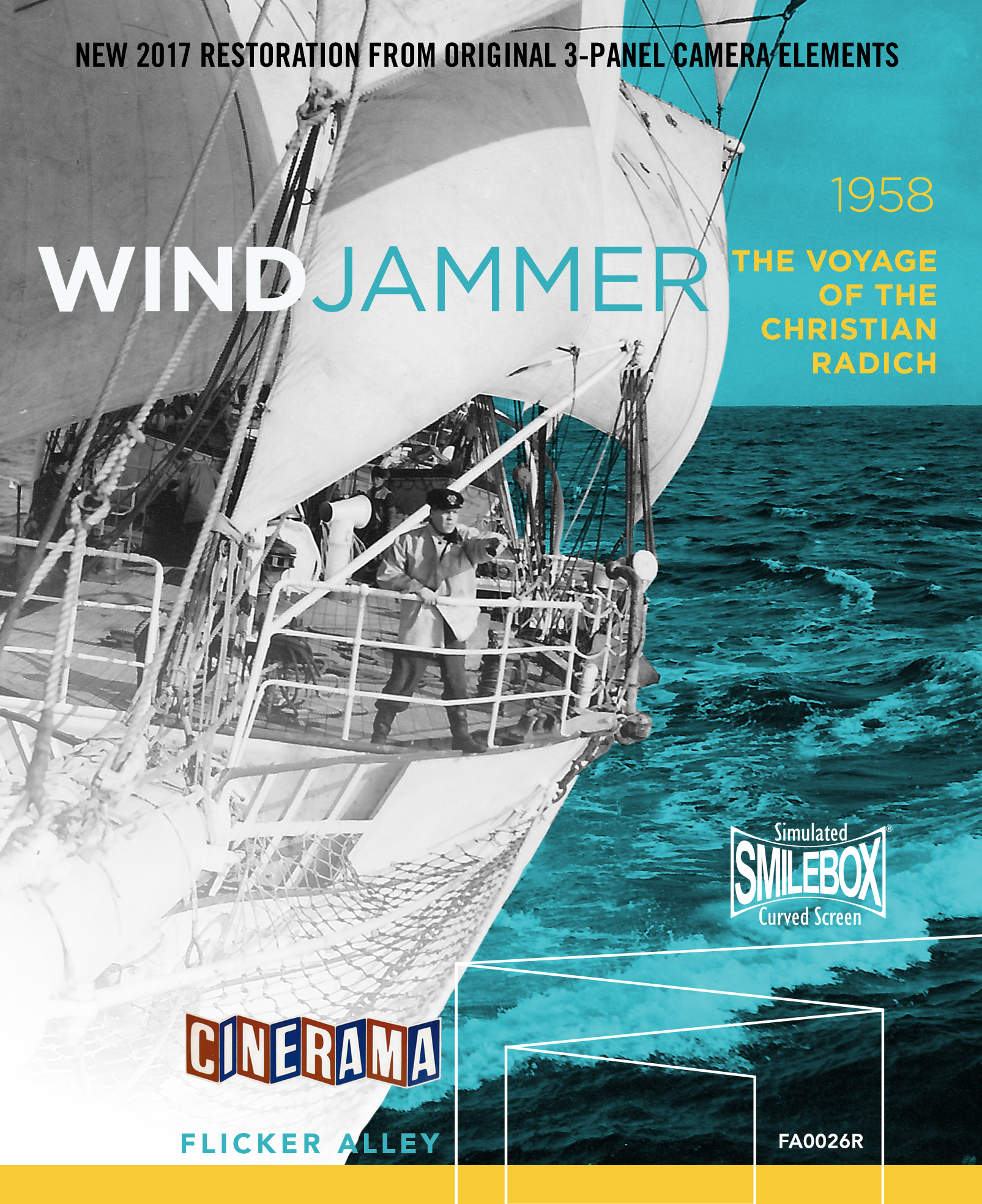 At a star-studded premiere at Grauman’s World Famous Chinese Theater in Hollywood, Windjammer: The Voyage of the Christian Radich sailed into movie history on April 8th, 1958. The brainchild of National Theatres, who hoped to compete with rival widescreen sensation Cinerama, Windjammer was the first — and eventually, the only — film to use the Cinemiracle process. Utilizing proprietary widescreen technology accompanied by seven-channel audio, Cinermiracle was the perfect format to tell the sweeping adventure of the Christian Radich, a Norwegian square-rigger, and her crew.
At a star-studded premiere at Grauman’s World Famous Chinese Theater in Hollywood, Windjammer: The Voyage of the Christian Radich sailed into movie history on April 8th, 1958. The brainchild of National Theatres, who hoped to compete with rival widescreen sensation Cinerama, Windjammer was the first — and eventually, the only — film to use the Cinemiracle process. Utilizing proprietary widescreen technology accompanied by seven-channel audio, Cinermiracle was the perfect format to tell the sweeping adventure of the Christian Radich, a Norwegian square-rigger, and her crew.
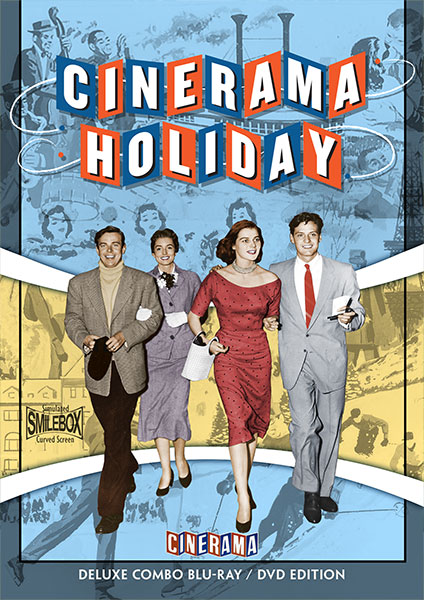 Cinerama Holiday was the 2nd of the original, 3-panel Cinerama travelogues. Released in 1955, the motion picture crisscrosses two hybridized travelogues of the “Cinerama camera accompanied” vacations of two adventurous, real-life, married couples. We meet first, Fred and Beatrice Troller, from Zurich, Switzerland, who upon their arrival on the first transatlantic flight to ever land in Kansas City, unload their motor scooter and begin a panoramic tour of America, which begins with them driving up Fremont Street in Las Vegas and catching a casino floor show. Meanwhile, Betty and John Marsh, leave their Kansas City home to take off on the same plane the Troller’s arrived on, for a return flight to Switzerland where this couple take in an outdoor ice show in St. Moritz, and where John rides a bobsled, beginning their European vacation. The latter of which provides just one of the film’s obvious, immersive, “thrill” sequences accentuated by the three-camera/curved-view format.
Cinerama Holiday was the 2nd of the original, 3-panel Cinerama travelogues. Released in 1955, the motion picture crisscrosses two hybridized travelogues of the “Cinerama camera accompanied” vacations of two adventurous, real-life, married couples. We meet first, Fred and Beatrice Troller, from Zurich, Switzerland, who upon their arrival on the first transatlantic flight to ever land in Kansas City, unload their motor scooter and begin a panoramic tour of America, which begins with them driving up Fremont Street in Las Vegas and catching a casino floor show. Meanwhile, Betty and John Marsh, leave their Kansas City home to take off on the same plane the Troller’s arrived on, for a return flight to Switzerland where this couple take in an outdoor ice show in St. Moritz, and where John rides a bobsled, beginning their European vacation. The latter of which provides just one of the film’s obvious, immersive, “thrill” sequences accentuated by the three-camera/curved-view format.
Cinerama’s Seven Wonders of the World
Of the seven sites the ancient Greeks named the “wonders of the world,” only one remains. Seven Wonders of the World is a round-the-world adventure that picks up where the Greeks of antiquity left off. Released in 1956, this Cinerama spectacle follows 20th century adventurer Lowell Thomas as he seeks out the Seven Wonders of the Modern World. Join him as he flies across the globe in the“Smasher,” a converted B-25, capturing some of the most breathtaking photography ever shot.
Cinerama’s Search for Paradise
“Join Lowell Thomas and follow in the footsteps of Marco Polo” in this new, digital restoration of Search For Paradise, the fourth of the original, 3-panel Cinerama travelogues. Released in 1957, the motion picture takes you to the “Roof of the World,” the Himalayas and Karakoram mountains of Central Asia, the highest region in the world. You’ll become part of the adventure as explorer Lowell Thomas searches for paradise in the ancient cities, wild waters, and lush gardens of the mountaintops.
Cinerama’s South Seas Adventure
South Seas Adventure proved to be the 5th and last of the original, 3-panel Cinerama travelogues. Released in 1958, and 4 months after the 3-panel competitor, Windjammer: The Voyage of the Christian Radich, it is at moments similar, although overall an entirely different tale than previously seen in the format. With partial narration by Orson Welles, the picture also may be the first to chronicle primitive bungee jumping.
The Best of Cinerama is comprised of all the greatest thrills of Cinerama, from the breathtaking roller coaster ride to the visit to La Scala, Milan, for Aida; from the hurtling bobsled run, to the stirring dances of the African Watusis. Made up of over 20 such exciting highlights, the film is not only an historic compilation, but also a stand-alone “thrill-a-minute” experience.
The adventure begins with the Sabre jet precision flying team from Search For Paradise, and then whirls back to the iconic roller coaster sequence from This Is Cinerama — newly restored for this release. From there, the three-panel journey goes global, showcasing some of the rich and exotic locales of Cinerama Holiday, South Seas Adventure and Seven Wonders of the World. There’s the Marian Year Celebration at St. Peter’s Square in Rome, featuring the first commercial motion-picture footage of Pope Pius XII. There’s the boat trip down the Ganges River at Benares. There are visits to Paris, Vienna, Athens, India, Brazil, Japan, Africa, Israel, and New Orleans, all in one spectacular Cinerama presentation.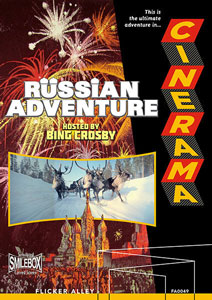
Photographed over an eight-year period by Russia’s top filmmakers, Cinerama’s Russian Adventure brings together some of the most exquisite, jaw-dropping, and beautiful sequences from over six Soviet Kinopanorama productions (the Russian equivalent of three-panel Cinerama). The film’s locations stretch from one end of Russia to the other, from the snow-covered countryside to the majestic subways of Moscow, from the deck of a whaling ship to the front seats of the Bolshoi Theater. Bing Crosby narrates the journey, offering both a grand and intimate view of a country and culture so often cited and yet so seldom seen.
We’re in the Movies: Palace of Silents & Itinerant Filmmaking
Palace of Silents: The Silent Movie Theatre in Los Angeles (2010)
On Fairfax Avenue in Los Angeles there is a 150-seat movie theater that for over sixty-eight years has doggedly dedicated itself to the exhibition of silent films. Built in 1942 by maverick film preservationist and collector John Hampton, the theater championed silent film at the very moment when the Hollywood studios across town were busily destroying their nitrate inventories. With hard chairs, phonograph-record accompaniments, and mostly original vintage prints, the dingy mom-and-pop operation was nonetheless a palace to the fanatical few who became its loyal audience. Through the theater’s tumultuous years of operation, its owners and employees have struggled to keep a cherished art form alive, often paying a heavy price in the personal tragedies that have stemmed from this struggle: obscurity, financial ruin, and even murder.
When You Wore a Tulip and I Wore a Big Red Rose (1983)
In the early 1980s, documentary filmmaker Stephen Schaller was instrumental in the rediscovery and restoration of The Lumberjack (1914), the oldest surviving film made in Wisconsin, and produced by a group of itinerant filmmakers who traveled from town to town making “local talent” pictures. Schaller’s lovely and sometimes deeply emotional, 63-minute journal/essay film offers a look at the making of the Wausau, Wisconsin classic, including interviews with the one surviving cast member and the relatives of others who appeared in the movie. His investigation includes moving remembrances of the people and town of Wausau as it was, and even reveals the on-set accidental death of one of The Lumberjack‘s top cameramen. More than just a piece of local history, When You Wore a Tulip is also of interest to anyone who cares about film history and preservation. Discovering Schaller’s gentle, artful movie is just as exciting as finding a lost family album.
Additionally, this Blu-ray/DVD combo set features five early examples of the cinematic tradition of itinerant filmmaking. The Lumberjack (1914) is the oldest film shot in Wisconsin that still exists in its original, complete form. Produced by an itinerant film company out of Omaha, Nebraska and cast with Wausau, Wisconsin locals, the short, silent one-reeler tells a romantic story set against the backdrop of the city’s lumber mills. Our Southern Mountaineers (1918), In the Moonshine Country (1918), and Mountain Life are a trio of shorts that document the lives of some inhabitants living in the eastern mountains of Tennessee and in the ‘moonshine country’ of northern Georgia and Kentucky. Also included are Huntingdon’s Hero (1934), a local talent film made in Huntingdon, Pennsylvania, and a newly-restored, 2012 selection for the National Film Registry, Melton Barker’s The Kidnappers Foil (1937), which features a local troupe of children from Corsicana, Texas enacting Barker’s basic story of child abduction and escape.
Under Full Sail: Silent Cinema on the High Seas
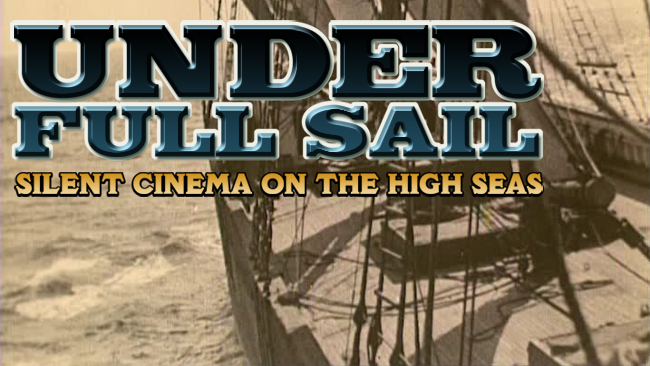 Discover a time when the truest adventure had the wind at your back and an infinite horizon all around. Under Full Sail, available on DVD, features four films produced between 1920 and 1940 showing the romance, grandeur, and allure of windjammers sailing open waters.
Discover a time when the truest adventure had the wind at your back and an infinite horizon all around. Under Full Sail, available on DVD, features four films produced between 1920 and 1940 showing the romance, grandeur, and allure of windjammers sailing open waters.
Around the Horn in a Square Rigger (1933) was filmed by noted sailor and author Alan Villiers, and documents the record-breaking 83-day voyage of the 1902 barque Parma from Australia to England in the 1933 Grain Race. Villiers writes, “We wanted to make a picture that would capture some of the stirring beauty of these ships, that would perpetuate, in the realm of shadows at least, something of the glory of their wanderings … some glimmer of understanding of the attraction which they hold over those who sail in them.”
The Square Rigger (1932), an early sound short filmed as part of Fox’s Magic Carpet of Movietone, shows life aboard the school-ship Dar Pomorza, “The White Frigate.” Built in 1909 as the Prinzess Eitel Friedrich, it was ceded from Germany to France as a prize of World War I, and was later donated to the Polish State Maritime School in 1930 where it served 50 years and trained more than 13,000 cadets.
Ship Ahoy (1928) is a unique record of the conditions and traditions of the North American lumber trade featuring an unidentified schooner equipped with a fore and aft rig as it transports lumber from the Carolinas up the coast to a northern port.
The collection is rounded off with a ten-minute sequence from Down to the Sea in Ships (1922) documenting an authentic whale hunt from the 1878 wooden ship Wanderer out of New Bedford, Massachusetts. The cameramen risk their lives to capture practices unchanged since Herman Melville immortalized them in Moby Dick.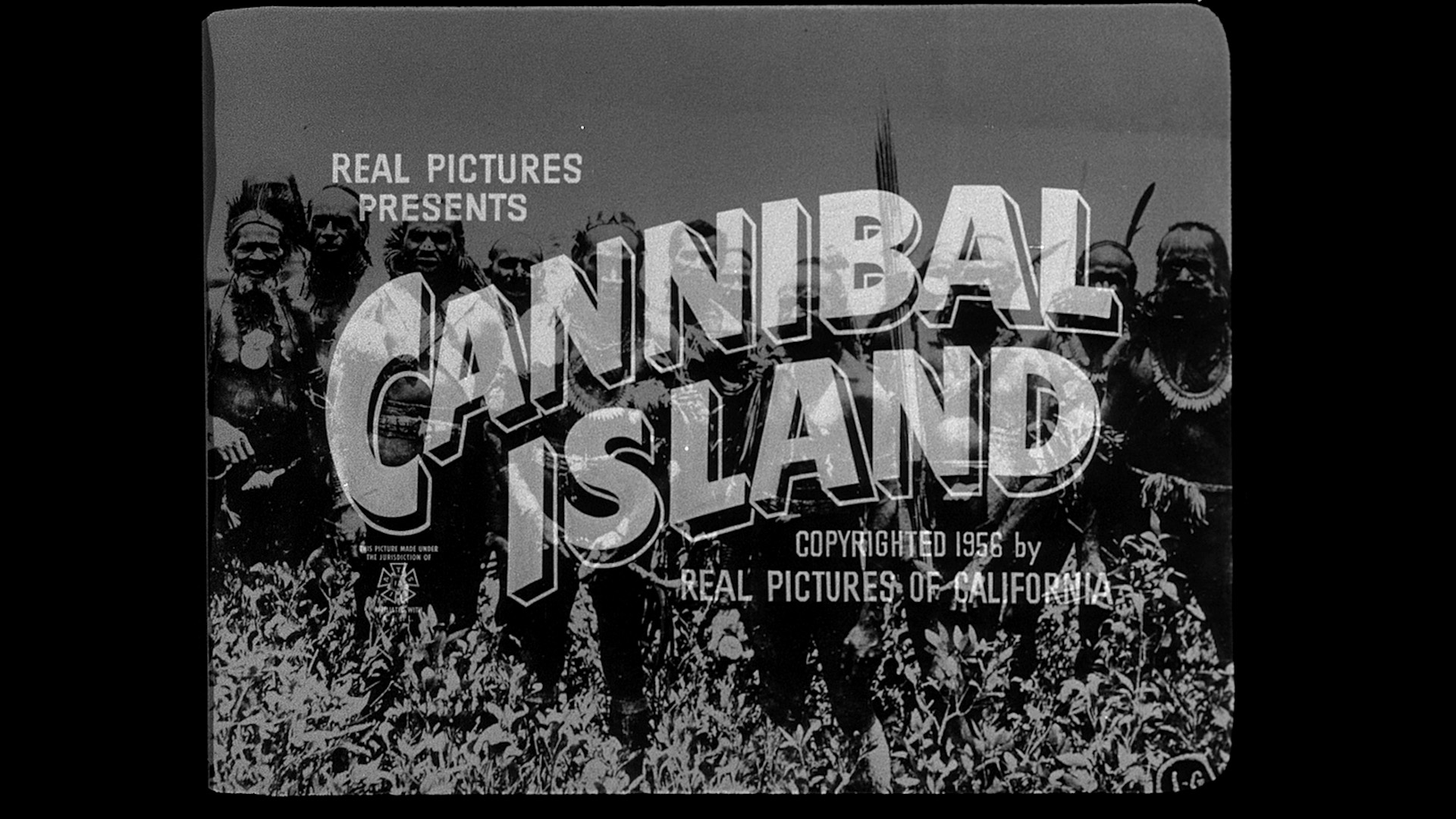
Gow: The Headhunter (Cannibal Island)
Paired alongside Merian C. Cooper and Ernest B. Schoedsack’s pre-Code action-adventure thriller The Most Dangerous Game (restored beautifully on Blu-ray), Gow (1931, 63 min.) is not only a true curiosity but also in many ways a key influence of later Cooper and Schoedsack productions, including King Kong. The footage in Gow was produced by Edward A. Salisbury, a wealthy British adventurer, who in 1920 set sail in an 80-ton yacht equipped with a motion picture laboratory to, in his words, “catch and hold for history a photo record of the fast–disappearing races of the South Seas Islands.” Cooper and Schoedsack were among the cameramen on this two-year expedition that documented ‘head-hunters’ and ‘cannibals’ along its route. The material was originally released as four separate films in the silent era and was consolidated as the film Gow, The Headhunter for an illustrated lecture by expedition member William Peck. Peck recorded his own cringe-inducing commentary in 1931.
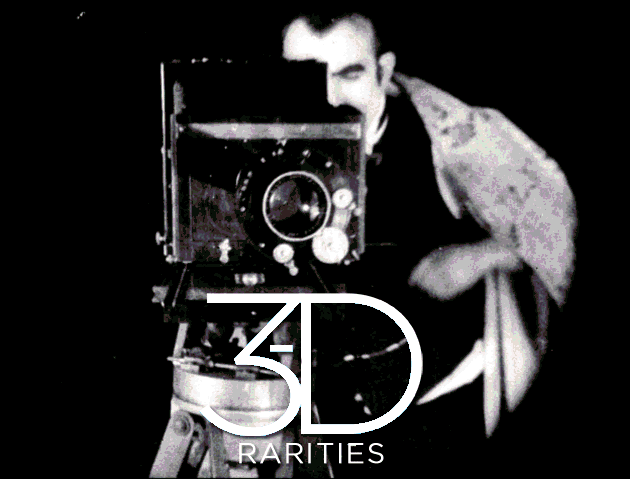 It took more than 30 years for the 3-D Film Archive to assemble and restore the material in 3-D Rarities, an eye-popping collection of ultra-rare and long-lost movies, many of which are documentaries!
It took more than 30 years for the 3-D Film Archive to assemble and restore the material in 3-D Rarities, an eye-popping collection of ultra-rare and long-lost movies, many of which are documentaries!
Documentary selections include Kelley’s Plasticon Pictures, the earliest extant 3-D demonstration film from 1922 with incredible footage of Washington and New York City; New Dimensions, the first domestic full color 3-D film originally shown at the World’s Fair in 1940; Thrills for You, a promotional film for the Pennsylvania Railroad; Rocky Marciano vs. Jersey Joe Walcott, the only 3-D newsreel; Doom Town, a controversial anti-atomic testing film mysteriously pulled from release…and more!
Presented in high-quality digital 3-D, all films have been painstakingly restored and mastered direct from archival materials.
Included in the deluxe Blu-ray/DVD dual-format edition of A Trip to the Moon: In Its Original 1902 Colors, this hour-long documentary directed by Serge Bromberg and Eric Lange of Lobster Films, makes for an excellent compliment to newly-restored and newly-scored, hand-colored version of Georges Méliès’ masterwork. The film chronicles the journey of A Trip to the Moon from its production in 1902, to its astonishing rediscovery in 1993, to the eventual restoration and opening at the Cannes Film Festival in 2011. It features rare photographs, step-by-step information about the restoration, and interviews with filmmakers Costa Gavras, Michel Gondry, Michel Hazanavicius, and Jean-Pierre Jeunet on Méliès’ enduring significance to cinema.
The Chaplin Documentaries
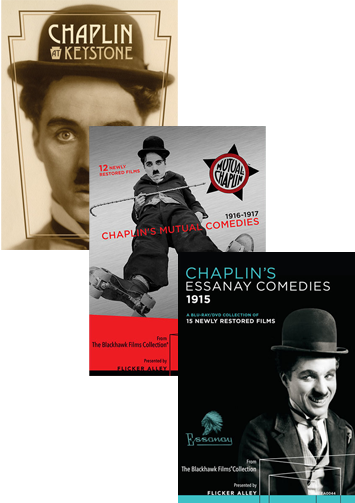 The Chaplin Project was a massive, twelve-year endeavor, led by Lobster Films, to restore all of Charlie Chaplin’s cinematic output from 1914 through 1917. The result was three must-have box sets for Chaplin fans, Chaplin at Keystone, Chaplin’s Mutual Comedies, and Chaplin’s Essanay Comedies. Featured in these box sets are the following trio of excellent, informative, and entertaining documentaries:
The Chaplin Project was a massive, twelve-year endeavor, led by Lobster Films, to restore all of Charlie Chaplin’s cinematic output from 1914 through 1917. The result was three must-have box sets for Chaplin fans, Chaplin at Keystone, Chaplin’s Mutual Comedies, and Chaplin’s Essanay Comedies. Featured in these box sets are the following trio of excellent, informative, and entertaining documentaries:
Inside the Keystone Project (2010)
A short documentary directed by Pauline Richard detailing the international efforts involved in collecting, reconstructing, restoring, and in some cases discovering the 34 films included on the Chaplin at Keystone DVD box set.
The Birth of the Tramp (2012)
Directed by Serge Bromberg and Eric Lange, The Birth of the Tramp, which is included in the Chaplin’s Mutual Comedies Blu-ray/DVD dual-format box set, chronicles Charlie Chaplin’s rise to stardom in concordance with early cinema’s growth from fairground attraction into an international industry.
Chaplin’s Goliath (1996)
By Academy Award® winner Kevin Macdonald, this elegant portrait tells the story of Charlie’s on-screen nemesis Eric Campbell, who achieved screen immortality with his appearances in eleven of the films collected on Chaplin’s Mutual Comedies.
A duo of excellent documentary films accompany the two-disc DVD edition of Chicago (1927), produced and ghost-directed by Cecil B. DeMille. These bonus films provide important and entertaining context for the original silent film version of the Roxy Hart story, later to become an Oscar-winning musical.
The Golden Twenties (1950)
This feature-length documentary was produced by The March of Time for RKO Radio Pictures. It includes incredible newsreel footage of presidents Woodrow Wilson, Warren G. Harding, Calvin Coolidge, Herbert Hoover, and Franklin D. Roosevelt, along with a host of other notable figures, such as Madame Curie, Babe Ruth, Harry Houdini, Joseph Conrad, Ruth St. Denis, George Gershwin, Gloria Swanson, Henry Ford, Irving Berlin, Al Capone, and many others. A lot of the stock footage you have seen from the 1920s comes from this documentary.
The Flapper Story (1985)
This 29-minute film, winner of the Student Academy Merit Award, examines America’s transformation from 19th century Victorian values to the new, first wave of women’s liberation in the 20th century. It includes newsreel footage of actress Mary Pickford and aviator Ruth Elder.
Documentaries on M.O.D (Manufactured-On-Demand)
Robert Frost (1961)
This lovely color film was shot over the course of a year, mostly in the region of Robert Frost’s solitary mountain cabin in Vermont. Probably the most celebrated American poet of the twentieth century, Frost – here in his mid eighties – is seen in three seasons walking the landscape, reading from about 25 of his poems inspired by what is shown. We hear all or part of “October,” “The Sound of Trees,” “Unharvested,” “Birches,” “The Road Not Taken,” “Gathering Leaves,” “Flower-Gathering,” “Good-Bye and Keep Cold,” “The Onset,” “Two Tramps in Mud Time,” “Mending Wall,” and “The Pasture,” among others. In one sequence Mr. Frost is seen in a college seminar answering questions from students. The nature photography of New England is outstanding, as is the quality of this print, mastered in high definition from the original negative.
A Publisher is Known by the Company He Keeps (1961)
Alfred A. Knopf and his wife Blanche founded the publishing house bearing his name in 1915. He claimed that he never published an unworthy book, and the Knopf catalog includes 17 winners of the Nobel Prize for Literature and 47 Pulitzer Prize winners. Knopf (1892-1984) maintained a close personal friendship with many of his authors, and in 1926 he bought a Bell & Howell 16mm camera and began to film them. These home movies form the heart of A Publisher is Known by the Company He Keeps, along with scenes of Knopf in 1960 at his home in Purchase, New York. With a warm and personal narration spoken by Mr. Knopf, we see footage and hear his comments about Knopf authors including Thomas Mann, Willa Cather, H. L. Mencken, Max Beerbohm, Sigrid Undset, Walter de la Mare, Rebecca West, Kahlil Gibran, Eleanor Wylie, Emma Goldman and other literary notables of Knopf’s generation.
The Indomitable Teddy Roosevelt
The youngest president in our nation’s history, Theodore Roosevelt brought an unprecedented excitement and power to the office. His was the life of a magnificent maverick — a man of enormous popularity and legendary achievements — a life story that makes any fiction pale by comparison.
From the sidewalks of New York to the frontiers of Dakota, from San Juan Hill to the White House as our 26th president – he saw it all and changed the country. Dynamic leader, explorer, war hero, creator of our National Parks, founder of the Progressive Party – Teddy was larger than life and a true American hero.
Directed by Harrison Engle and outstandingly narrated by George C. Scott, this award-winning film artfully blends remarkable film footage of great events, meticulous recreations and the stirring music of John Philip Sousa to create a spectacular visual and musical experience.
Flicker Alley, in partnership with Disobedient Films, proudly present London Symphony, a brand new silent film—a city symphony—which offers a poetic journey through the city of London. It is an artistic snapshot of the city as it stands today, and a celebration of its culture and diversity. The film is divided into four parts, corresponding to the four movements of a musical symphony.
Directed and edited by Alex Barrett, and featuring a soaring score by James McWilliam, London Symphony is a contemporary “city symphony,” a genre of creative non-fiction that flourished in the 1920s and consisted of works that attempted to build poetic portraits of urban life.
This Blu-ray also included a wonderful pair of documentary bonus features: London Medley (1933), a 10-minute ‘city symphony’ (newly scanned in HD), presenting “intimate glimpses of life in the Old World’s greatest metropolis,” and Hungerford: Symphony of a London Bridge (2009), a 3-minute film presenting an abstract journey over Hungerford Bridge, London, and the footbridges alongside it.
Listen to Britain: And Other Films by Humphrey Jennings
Humphrey Jennings was one of the greatest figures in the celebrated British documentary film movement, and he is most remembered for the way his work reflects the concerns and conditions of World War II era in the United Kingdom. He is undoubtedly of great historical importance, but the ultimate justification for this unique gathering of work is that Jennings was a wonderful filmmaker who made beautiful films. Contained within this one man was a seemingly impossible array of artistic abilities. He had a poet’s command of film language, a painter’s eye for evocative imagery and composition, a musician’s ear for rhythm and tone and counterpoint, a Soviet’s sense of juxtaposition, a journalist’s nose for the concrete and the factual, and a compassionate man’s love for the people he portrayed.
It may seem paradoxical that an artist of such positively romantic parts should have labored almost exclusively in the documentary realm, with all that it implies of subordination to subject and sponsor. But Jennings’ particular talents emerged at a time of very particular need, and that seeming subordination to a cause is in fact the key to the continuing resonance of his work. In these pictures, Jennings’ impressive aesthetic arsenal helped to expand the scope and the vocabulary of documentary. In turn, the documentary idea, especially in time of war, served to focus and direct his aesthetic impulses to public ends.
Berlin, Symphony of a Great City
At once an invaluable photographic record of life in Weimar Berlin and a timeless demonstration of the cinema’s ability to enthrall on a purely visceral level, Berlin, Symphony of a Great City (Berlin, die Symphonie der Grosstadt) offers a kaleidoscopic view of a single day in the life of a bustling metropolis.
Carl Mayer (The Last Laugh), influenced by the naturalistic Kammerspiel movement, envisioned “a melody of pictures” sprung from daily reality instead of the stylized artificiality of the studio-bound expressionist film. Following Mayer’s rough outline, photographer Karl Freund deployed a team of cameramen to explore the avenues, alleyways and factories of Berlin and secure hidden-camera glimpses of the people and machinery that provide the city with its constant motion. The many hours of footage were then edited into a series of five acts, like movements of a symphony.
Berlin defined the formula of the “city symphony” film. According to John Grierson — the filmmaker/critic who coined the term ‘documentary’ — “No film has been more influential, more imitated.”
Inspired by the 1938 report of the La Follette Civil Liberties Committee’s investigation into the repression of labor organizing, Leo Hurwitz and Paul Strand’s biting and beautiful Native Land (1942, though largely shot between ’37 and ’39) combines documentary footage with staged reenactments to depict the struggle of trade unions against corporations, their spies and contractors. Legendary singer, actor and activist Paul Robeson narrates the film through words and song, lending the work a sense of powerful gravitas.
In part a progressive response to the patriotic newsreel series The March of Time, Hurwitz and Strand – alongside their documentary filmmaking collective, Frontier Films – divided the majority of the film into four parts, all based on real events: the murders of a union farmer in Michigan and a labor organizer in Cleveland; the shooting down of two Southern sharecroppers (one black, one white) by deputies; a brutal Ku Klux Klan rally in which members tar and feather progressive political candidates; and the Republic Steel Massacre of 1937. Interwoven with these sequences are dramatizations of the workings of labor union spies, as well as slice-of-life montages meant to illustrate the themes of liberty, freedom and industrial modernization.
This DVD presents a collection of films designed to provide a rough overview of the first 15 years or so of motion picture production in the United States and Europe. In addition to early Lumière shorts (many of which were simply documents of ‘reality’ (such as Exiting the Factory), there are also several “actualities” included, all of which are both historically fascinating and wonderfully entertaining. They include: President McKinley at Home (1897), Pack Train on Chilkoot Pass (1898), Sky Scrapers of New York City from North River (1903), San Francisco: Aftermath of an Earthquake (1906), The Dog and his Various Merits (1908) andAeroplane Fight and Wreck (1910).
Selected in 2002 by the Librarian of Congress as a “culturally, historically, and artistically significant  work” for permanent preservation in the National Film Registry, this beautiful film is the story of “Miss Mary” Coley, an African-American midwife more than a half-century ago in rural Georgia. Its production was sponsored by the Georgia Department of Public Health as a demonstration film for illiterate “granny” midwives. All My Babies quickly transcended its initial purpose and was used around the world by UNESCO. It has become an enduring classic of nonfiction film.
work” for permanent preservation in the National Film Registry, this beautiful film is the story of “Miss Mary” Coley, an African-American midwife more than a half-century ago in rural Georgia. Its production was sponsored by the Georgia Department of Public Health as a demonstration film for illiterate “granny” midwives. All My Babies quickly transcended its initial purpose and was used around the world by UNESCO. It has become an enduring classic of nonfiction film.
All My Babies was written, produced, and directed by George C. Stoney in close collaboration with Mrs. Coley as well as with the local public health doctors and nurses. It shows the preparation for and home delivery of healthy babies in both relatively good and bad rural conditions among black families at that time. In addition, the film is both a deeply respectful portrait of “Miss Mary,” who is revealed as an inspiring human being, and a record of the actual living conditions of her patients.
Before Hollywood There was Fort Lee, New Jersey
This enormously interesting DVD, produced in cooperation with the Fort Lee Film Commission, offers perhaps the most detailed look we shall ever have at early Fort Lee film production, a center of the American film industry when Hollywood was still orange groves. Thomas Hanlon’s 1964 documentary Before Hollywood There was Fort Lee, New Jersey uses rare still photographs, almost-complete versions of such films as Edison’s Rescued from an Eagle’s Nest (1907), Biograph’s The Curtain Pole (1909), and poignant footage from 1935 of the great glass studios in ruins to show the rise and fall of silent filmmaking in the village on the Hudson.
World War I Films Of The Silent Era
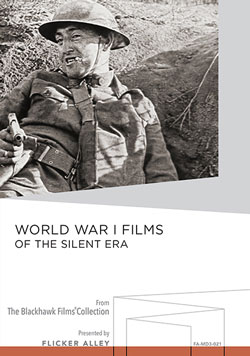 “It might reasonably be contended that Humphrey Jennings is the only real poet the British cinema has yet produced.” – Lindsay Anderson, Director
“It might reasonably be contended that Humphrey Jennings is the only real poet the British cinema has yet produced.” – Lindsay Anderson, Director
These astonishing films show and explain essential news and propaganda functions of the movies during the Great War of 1914-1918. In those days before television – and even before radio – fiction films in movie theaters were the most widely shared public experience, while news films were the most potent and detailed public images of armament, military life, and even front line action. Some news film was faked and much of it was censored, but some was authentic, obtained at great risk by daredevil combat cameramen.
Fighting The War (1916) is the work of 26-year-old American adventurer Donald C. Thompson. He photographed some of the most amazing front line films of the entire war. This film was taken during the Battle of Verdun in which the French suffered staggering losses defending the town and its associated forts. With his keen photographic eye and iron nerves, Thompson shows not only troop movements and trench life but also authentic battle from positions within a few hundred feet of the German lines. Then he takes to the air and photographs an actual dogfight between British and German aircraft from an open-cockpit plane.
The Log of the U-35 originated as a German war propaganda film, comprised of footage shot in April through May 1917 by German submarine commander Lothar von Arnauld de la Perrière during a wartime excursion in the Mediterranean Sea. A number of ship sinkings were documented, a few of them shocking in their destructive finality. This edition is a combination of the 1919 British and the 1920 American versions of a jaw-dropping German film of 1917, Der Magische Gürtel (The Enchanted Circle).
The Moving Picture Boys in the Great War (1975) is a compilation documentary narrated by Lowell Thomas, illustrating changing attitudes toward the war and its participants, as well as toward the movies themselves. Every shot is an image preserved from those days— actual and faked news films, government propaganda films, fiction films that range from the sensational excesses of ‘Hun brutality’ to the sentiment of D.W. Griffith, as well as magazine covers, posters, lantern slides and still photographs. The filmmakers were doctoral candidates in American studies, and apart from being quite entertaining, the film has been praised by historians for its balance and accuracy. Winner, Gold Medal, 1975 Chicago Film Festival.
AND MANY MORE…

In addition to our feature-length selections of documentaries, almost every one of our publications include at least one short bonus documentary. Examples include Clara Bow: Discovering the ‘It’ Girl, an hour-long film featured alongside Children of Divorce that documents the life of the woman who would become the icon of the flapper era; Der Film im Film within The Ancient Law, the only surviving excerpt of a documentary on film production in Weimar Germany; Atour de La Roue, a short behind-the-scenes film that provides a vivid record of the great work in production; and many other non-fiction curiosities and small treasures of note!

